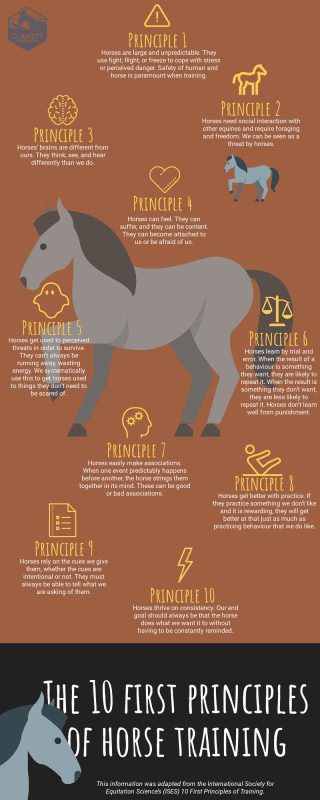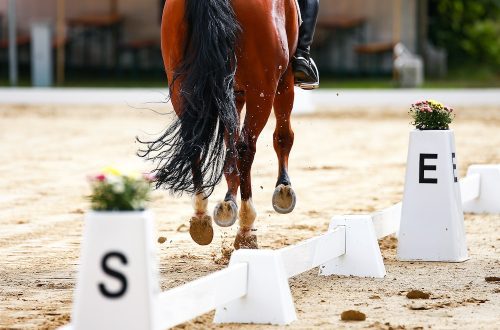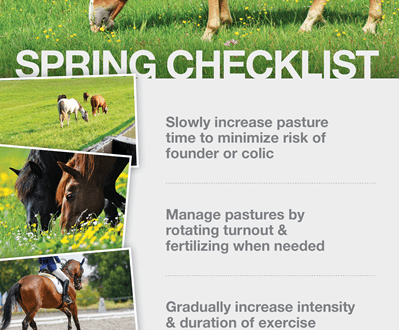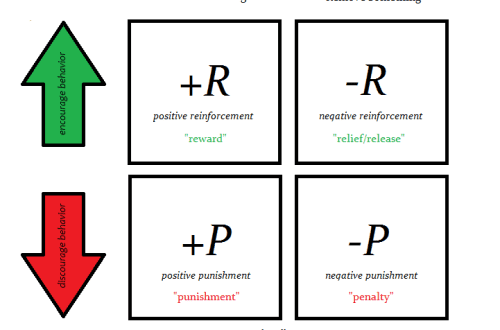
10 Principles for Training Young Horses
10 Principles for Training Young Horses
The goal of all training is a healthy, happy horse, prepared to willingly carry the rider’s weight in obedience and health. The achievement of this goal is the correct preparation and training of the animal.
Only an experienced rider, who has the feeling of a horse, is able to ride it correctly. Ideally, the process of working with a young horse should also be controlled by a trainer. Getting a young horse off to a good start is much more difficult than you might think. Each horse is individual and differs in its special character, temperament, development and learning speed, peculiar only to it. Knowing how to assess a horse’s developmental stage, how to choose the right training program for him to avoid over-exertion and associated injury, most often comes with sheer professionalism.
Unfortunately, the consequences of most mistakes made at the stage of preparation and training of a young horse accompany him all his life. Such errors can be caused by a number of reasons, but they can be avoided.
Both trainers and riders, even if not to speak of their experience, must show patience, understanding, care and interest. Their knowledge of the horse must be accompanied by objective expectations, an unwillingness to force progress.
Let’s talk about what principles you need to rely on if you are going to work with a young horse.
1. Accounting for the character and nature of the horse.
A person who takes up work with a young horse must have knowledge of its nature. Only by understanding the nature of horses, one can properly treat them, take into account behavioral characteristics, certain reactions that occur in response to certain stimuli. Each horse has its own character and temperament, preferences and fears. About the feelings of an animal, we can tell the provisions of his ears, eyes, tail, ears, eyes and tail movement. We must not forget that horses are prey animals, and besides, they are herd animals, we must remember that soft work with horses is based on the principle of avoiding pressure. To gain trust and respect from a horse, you need to become a leader for it.
Horses are not aggressive by nature. Most of the vices of their behavior are due to their previous negative experiences. An animal that demonstrates readiness to work puts the cornerstone in the further foundation of your cooperation. By showing patience and respect for the horse, you will strengthen it, do not allow fear and resistance to arise.
You should be aware that the horse’s confidence and cooperative attitude can be quickly eroded or lost through mishandling. Correction can take months or even years. Unsystematic training or demands reinforced by brute force often lead to physical or mental instability and premature wear of the horse.
The mental development of a horse is vital in its training and further work under the saddle. Without paying attention to him, you will not be able to achieve a harmonious relationship with your four-legged partner.
Separately, we note that, speaking of gentleness in working with a horse and taking into account its psycho-emotional state, we are not talking about permissiveness. A horse, like any other animal, must follow certain rules of behavior and respond adequately to any requirements of its rider or trainer. A person, as a leader, cannot but insist on his own, but the main thing in this case is how exactly he acts. Be patient, remember to learn, and forget about harsh exposure!
2. Rider and trainer.
The young horse’s first partner should be an experienced rider with a balanced seat and the ability to properly apply the aids. It must act correctly on the horse, not be fearful or impatient, too heavy or tall. An important role is played by the ability to ride with shortened stirrups and the presence of a strong landing. A versatile experienced rider will be able to correctly respond to the constantly changing center of gravity of a young horse.
Тa renner watching a young horse train from the ground, in addition to practical experience, must have deep theoretical knowledge (including in the field of anatomy and biomechanics). They will help him give valuable advice and help overcome difficult situations without using excessive force or pressure.
3. Balance.
It is vital for every riding horse, regardless of its use, to be able to move in balance with the weight of the rider. An unbalanced horse, to compensate for the lack of balance, moves tensely and cannot relax. Thus, it can be said that the lack of balance endangers the physical well-being and health of the horse.
The ability of the rider to adapt to changes in the horse’s center of gravity is of the utmost importance for riding and training.
Initially, the rider’s weight will upset her natural balance. By nature, the horse is forehand balanced (carrying more weight on the forelegs). When additional weight is added when the rider is mounted in the saddle, the horse is faced with an unusual situation – he has to strive to find a new balance, which the horse can master in several stages.
The first stage of training is aimed at the gradual search by horse and rider for a new mutual balance. Therefore, the main goal of further education is achieving relaxation.
The horse must be able to balance with the weight of the rider, which is not possible if his muscles are tense. By tensing up, the horse will not be able to find balance or show his natural movements. To further improve internal and external flexibility and balance, the overall basic training of a young horse should be varied, no matter how talented the horse may be in any given discipline. A variety of basic training improves his skills, flexibility and calmness, and also has a positive effect on the horse’s fitness and health.
Usually, horse riding and training begin at the age of about three years. Whether this happens a few months earlier or later depends on the development of the individual horse. A more important factor than the age of the animal is the correct and careful handling of it, so the age of the start of the race can be shifted back and up to 2,5 years. We also note that a horse that has reached the age of 4 years (and older) becomes too strong physically, which can make it difficult to ride, especially if non-professionals are involved in this process.
4. Tightening. Before the start of training, a young horse must get used to people – get acquainted with a halter, a lead, with other ammunition, learn to walk next to a person, be calm about brushing, manipulating hooves, etc.
This preliminary training is best started when the horse is still in foal age. Raising the hooves, as well as simple manipulation of the legs, increases the horse’s level of confidence in the person. Such procedures can be carried out starting from weaning.
5. Longing.
Longing should only be started when the horse has become familiar with the new environment and has acquired a certain sense of trust and respect for people. Lunging before the start of the ride is necessary. She teaches the young horse to move forward on command, introduces him to the messages, the action of the snaffle, improves rhythm and balance.
First, the horse is trained to use a snaffle (it is desirable, of course, to use a cavesson), a girth and a saddle. All ammunition is carefully adjusted in accordance with the parameters of the horse.
Training is recommended to be carried out in a barrel or a fenced arena. This makes the job easier and prevents the horse from trying to escape. Work mainly at the trot – it is at this gait that it is easier for horses to find their rhythm and start to lower their heads.
Side reins and elastic bands should be abandoned at first – the young horse must first find its balance on its own. When the horse is balanced, use interchanges. They are should be of such length as not to put pressure on the mouth, neck and back of the head. Gradually they are shortened. It is important that the horse was reaching for the snaffle, and did not strain and shortened the neck. It’s better if the horse holds his nose for now vertically or slightly ahead of the vertical.
At this stage, rhythm is more important than contact to ensure performance. It is the rhythm that shows how balanced the horse is. Trying to put the horse on the reins by shortening the reins will lead to resistance and tightness.
On the lunge, the horse learns to understand the means of control – the barrage and voice – in the beginning, the limiting action of the lunge and voice – later. The skills acquired while working on the lunge will help you in the future, when training a horse under the saddle.
Lunging with a young horse should not take more than 20-30 minutes. Change direction often.
6. Wiring on the occasion.
The horse is led from the left shoulder, maintaining soft contact with the mouth. Avoid rough or sharp action on the snaffle, as this breaks the horse’s trust in the hand and prevents relaxation. The horse should move forward freely, trusting the leader.
7. The first lessons under the horseback.
Before you sit in the saddle for the first time, the horse needs to be moved on the lunge – this will give it the opportunity to relax. The first landing in the saddle takes place on the cord circle, in a fenced arena or barrel. The horse is held by the first assistant, the second assistant helps the rider to sit down. The stirrups are shortened so that the rider can subsequently lighten the horse’s back as much as possible. Spurs are not recommended.
Once the rider is in the saddle, the horse can stand to get used to the weight. The rider should talk to the horse, if possible, stroke it. With a nervous or very worried horse, it is better not to stand still, but immediately set it in motion so as not to create more tension.
The horse is slowly led in a larger circle, gradually lengthening the cord. If the horse wants to trot, he will need to be allowed to.
On the lunge, the horse must learn to respond calmly to the weight of the rider, first at the walk, then at the trot. Don’t stop her if she wants to gallop.
The first exercises should not take too long – frequent, short repetitions are preferred. At the end of the lesson, you can sit in the saddle a couple of times and dismount for training.
The rider needs to feel what pace suits the horse in order to find balance, and not just impose on him what is comfortable for him. The rider maintains very gentle contact with the mouth (so-called “passive hands”). In no case should you try to put the horse “on the reins”. Any persistent demands can lead to resistance: the horse will shake his head, the rhythm of the movements will become torn, the back will tighten, the horse will begin to tail.
The more you succeed in finding the right rhythm and the less you work the reins at this stage, the more solid foundation you will lay for further training. The main goal now is to find a balance.
During the ride, you must gain the trust of the horse, get him obedience and cooperation, lay the foundation for further training. It is especially important in this case – to learn to recognize the signs of her fatigue, to correctly assess the degree of her endurance.
8. Beginning of basic training.
The three main goals of the first months of training are rhythm, relaxation and contact.
The first goal is to provide rhythm, to keep the pace of the horse.
Moving forward too fast leads to hasty leg movements and rhythm disturbance. Moving forward is not an acceleration of the pace, but the activation of the horse’s hind legs, providing an energetic gait.
Relaxation is the main goal of training and should never be overlooked. It should be regularly reviewed and improved as it is the basis for all subsequent work. It refers to the horse’s ability use muscles without tension, compress and relax them when necessary. Relaxation can only be achieved by due to the refusal to use brute force during the ride and training.
A relaxed horse moves with its back and maintains a natural rhythm, but does not rush forward. To make sure the horse is relaxed, the rider should give the reins smoothly. The horse will reach down for the snaffle. This exercise is one of the most important even at this stage of initial training. Proper contact allows the horse to balance with the rider, move with rhythm in all three gaits, and work with his back.
At the walk, the reins are shortened just before starting to trot. At the trot and canter, the young horse is led on a calm, soft and “passive” hand. A young horse will find the right balance and rhythm and relax properly only if the rider works gently on the reins. This also applies to horses that have been artificially bent, their necks twisted and they are used to moving in this position.
Initially, the point at which the horse will make contact with the hand will be relatively low. The horse’s mouth will be approximately at the level of its elbow joint. This position will provide the desired stretch and relaxation of the neck and back muscles. It is wrong to try to position the horse’s neck using only the reins. The shortened neck is tense and interferes with balance. If the rider overdoes bending and turning, this will also lead to loss of balance.
When training young horses, it is very important to take into account their physical condition, strength, endurance. Overly difficult work must be avoided. If these criteria are met, the young horse will not be harmed.
In the early stages of basic training, the horse is not required to perform dressage maneuvers. For its further development, exercises such as changing direction through a long or short diagonal, volts and serpentines of a large radius are suitable. Volts, serpentines and tight turns should be avoided as they can damage the horse’s joints.
9. Further basic training.
The previous stage lasts about 4-6 months. This period is enough to prepare the horse for further work.
Combining the past: the horse moves forward, maintaining rhythm and relaxation, maintaining contact. She is looking for the rider’s hand and knows how to reach for the snaffle.
Gradually, the requirements can be increased with an eye to the level of skill of the rider and the ability of the horse. In addition, household circumstances may also play a role. Whereas a more experienced horse follows a pattern, training a young horse can be messy and circumstance dependent. The ups and downs in her work, her level of fatigue and her need to move, even environmental factors can affect her daily learning and, with it, her results.
The training of a young horse should be as diverse as possible: this will not only make the animal more focused, experienced, but also help to physically develop it. Dressage work must not exclude cavaletti work or jumping.
The rider will need to start teaching the horse more and more subtle and subtle signals, show him how to go on the reins, gradually explain that the balance from the front should move back.
Work at the training trot can be included in the training if the horse works with his back and willingly goes to the reins. First, it is enough to make a couple of paces. If the horse gets tight, return to the posting trot to strengthen the back.
Good basic training will make the horse attentive to the rider and allow him to remain relaxed and supple. Every young horse should be familiar with dressage work. This will improve her attention balance, coordination and self-confidence.
10. Jumping free.
Free-jumping improves the basic skills and flexibility of the horse and makes it easier to prepare for jumping afterwards.
Before you start, you need to make a few preparations:
- A horse can jump with or without a halter, or with a bridle removed.
- The fencing of the arena must be strong and high, all entrances are closed, mirrors are hung or removed.
- The Springgarten is surrounded by slopes.
- The entrance to the row should be attractive, it should invite the horse to jump, and not scare him).
- Distances between obstacles should be optimal.
You will need a trainer and at least two assistants. It is important for the horse to get a positive jumping experience. Therefore, the coach and assistants must be knowledgeable and experienced. It is necessary to provide a calm atmosphere for training.
The horse should not jump out of fear – it should not be frightened and driven into a row.
During the first month of training, the horse should not jump high hurdles (this can break the young horse’s confidence).
After four to six months of basic arena training, jumping under the rider on small snuffers and jumping free on low obstacles, you can begin full-fledged jumping training.
Concluding our article, I would like to say the following. In training young horses, the following rule should be followed: “Always calm, but never sluggish. Always active, but never in a hurry.”
Uwe Spenlen; translation by Valeria Smirnova (source)
 Fi_World 11th of October 2017
Fi_World 11th of October 2017Interesting article, thanks! The only thing that is not clear is the age at each stage) “A more important factor than the age of the animal is the correct and careful handling of it, so the age of the start of the race can be shifted back and up to 2,5 years. » – i.e. does it mean that you can start the race at 5.5 years old or at 2.5 years old? And then they do tight-fitting with a horse 2-3 years old? As far as I know, it would be better to do a close-fitting even before weaning, while the foal is with its mother, then it is more difficult to trim a horse for 2-3 years, although I do not argue, the result is in fact the same by three years. Or is he still referring to a young horse from foaling lactation to the last test on young horses? Or does it mean that these recommendations are more of a general focus, and particular cases should already be considered for each horse separately? Answer
 Maria 11th of October 2017
Maria 11th of October 2017Regarding tightness – read: p. 4. It is carried out BEFORE the start of training. You can communicate with the horse, socialize it and so on at any time. From birth, from weaning, from the moment when the horse falls into the hands of a new owner. To call in – from 2,5 years, depending on the characteristics of the horse. Answer





